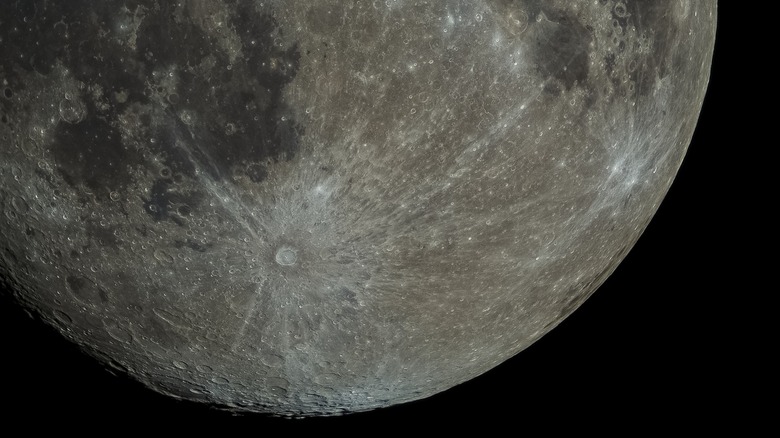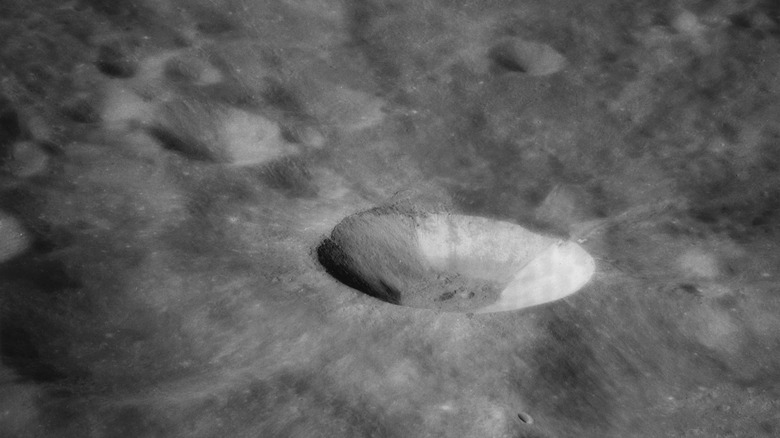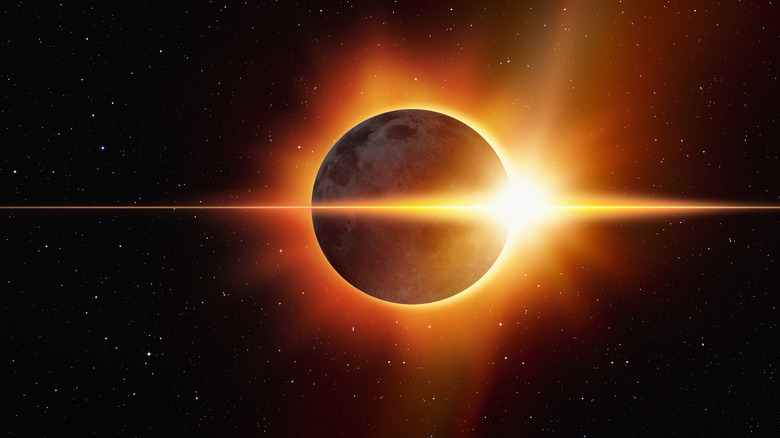Why The Lunar South Pole Is So Important To Scientists
The series of U.S. Apollo missions, including Neil Armstrong's moonwalk back in 1969, all took place on the moon's northern hemisphere. From 1969 to 1972, the U.S. landed at six different spots on the moon's surface, all on the side facing Earth because it was easier to navigate and keep in communication with mission control. But as it turns out, it's the other side of the moon that holds more interest to scientists.
On August 23, 2023, India became the first nation to reach the lunar south pole when the unmanned Chandrayaan-3 spacecraft landed there, per NBC News. This side of the moon, which we never see from our vantage point on Earth, may hold more lunar ice than the northern hemisphere. According to Reuters, this ready supply of water could be used in helping to establish a permanent base there or in missions to Mars.
A crucial resource
Scientists have been aware of the possibility of ice on the moon for more than 20 years, ever since a NASA space probe first detected what turned out to be ice on its surface. In 2018, the space agency finally "directly observed definitive evidence of lunar water ice," with much of it concentrated on the south pole in massive craters where it's especially cold and dark, according to NASA.
Besides the obvious benefit of moon colonists having a ready supply of water to drink, space explorers could, by separating the water's oxygen and hydrogen molecules, use the former to breathe and the latter as fuel. Finally, scientists are also interested in the ancient ice, possibly billions of years old, as a means to learn more about the origins of both the moon and Earth. It's believed the ice may have ended up on the moon when water-laden asteroids crashed onto its surface.
Solar power and the distant past
Beyond the lunar south pole's water resources, its location allows for near-constant exposure to the sun, perfect for a solar-powered manned moon station. Unlike on Earth, at the moon's poles, the sun doesn't rise and set but instead circles around, thus providing a steady power source via areas that are almost always illuminated.
Scientists are also interested in the lunar south pole as a place to study low-frequency electromagnetic waves from distant parts of the universe that are impossible to study on Earth because of things like radio and television waves that drown them out. By studying these electromagnetic waves, they can better understand the beginnings of the universe. Still, lunar ice seems to be at the top of the list of reasons various nations are racing to the "dark side" of the moon. The U.S. has plans for a manned mission there in 2025, and Russia just had a failed attempt with an unmanned probe, per Reuters and NASA. Like here on Earth, it's about the potential exploitation of resources.


